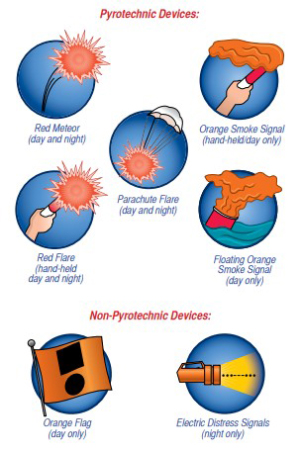Distress Signal
noun
Definition of Distress Signal
A distress signal is a universally recognized sign that shows you’re in an emergency and need immediate assistance.
All boats operating in coastal waters, the Great Lakes, or on the high seas are required to carry any combination of three signals for day use and three for night use.

Here’s a table breaking down the types of visual distress signals and when they’re used.
| Distress Signal Type | Visibility | Burntime | Usage |
| Red handheld flare | 7 miles — clear night | 60 seconds |
|
| Parachute flare | 28 miles — clear night | 40 seconds |
|
| Orange buoyant smoke | 3 miles — in daylight | 3 minutes |
|
| Orange handheld smoke | 3 miles — in daylight | 50 seconds |
|
| LED flare or electric distress light | 3 miles — clear night | 6 hours on one battery |
|
The Hella Halogen Twin Beam Hand Held Search Light is a good handheld alternative for the electric distress light as its trigger switch allows for morse code transmission.
Sound signaling equipment is typically used at the same time as the visual distress signal to send out a continuous S.O.S. in Morse code, as pictured below.

Example of Distress Signal in a Sentence
"The marina officials spotted the yacht’s orange smoke distress signal and alerted the U.S. Coast Guard."
Related Terms for Distress Signal
